Mini watermelons are the best! They have the same delicious flavor as larger watermelons but are easier to cut and transport. Here's how to choose the best mini watermelon to make sure it's extra juicy and flavorful!
Because we can't usually cut into a melon to check its ripeness, we have to have several ways to check the outside of a watermelon to make sure we are getting a delicious melon.
At the end of this post, you should be confident in picking the best watermelon whether you're shopping at a grocery store, farmer's market, or farmstand.
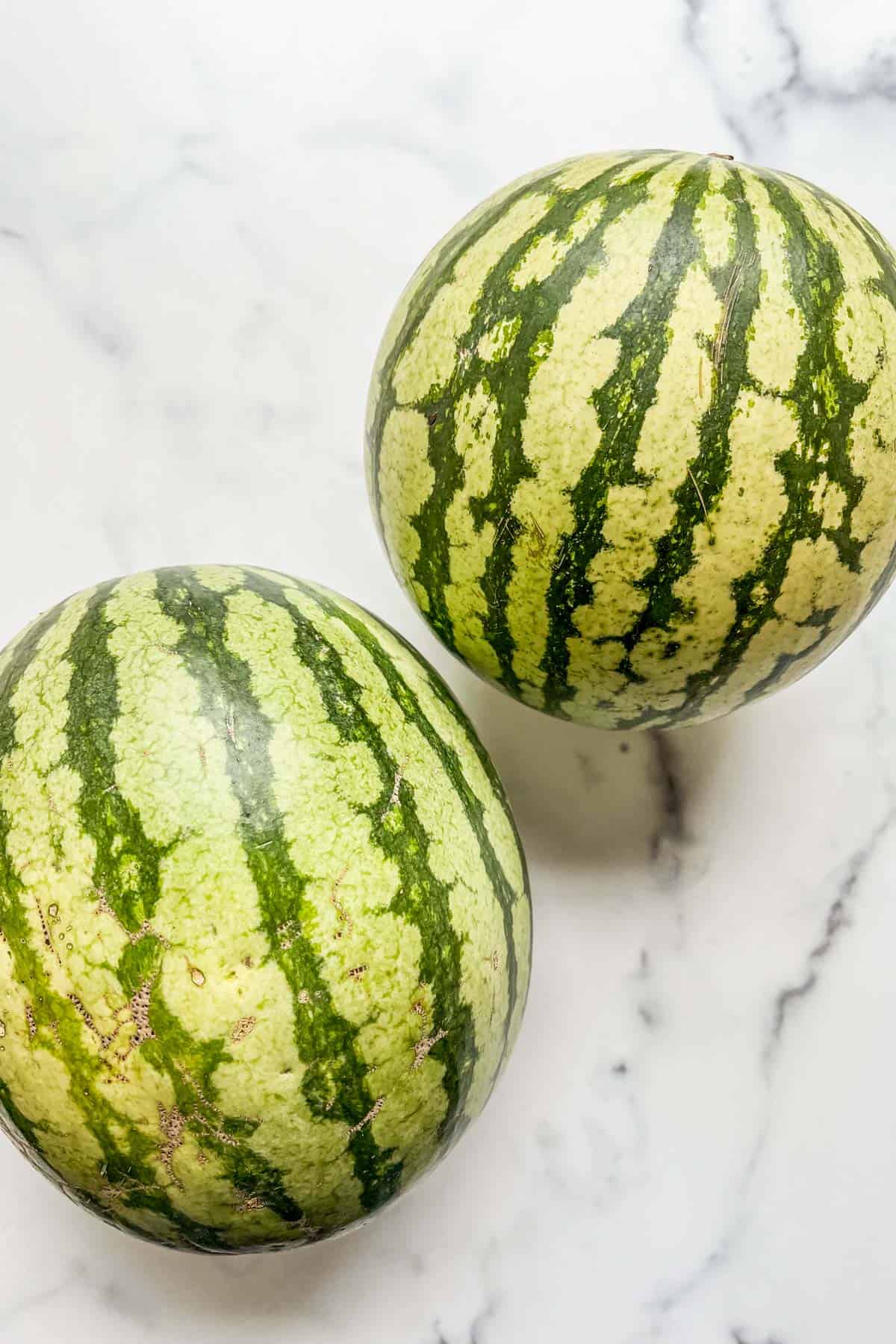
Tips for Choosing Mini Watermelons
Choosing small watermelons is similar to choosing large watermelons, but there are a few specifics to know.
- Shape - a great mini watermelon will be a uniform shape and rounder, as opposed to oblong or oval. Avoid watermelons with any irregular bumps.
- Weight - a juicy watermelon will be heavy for its size.
- Weak spots - press the end of the watermelon where the vine was connected - it should be firm and not have any give. Make sure the watermelon has no soft spots.
- Field Spot - watermelons should have a field spot - this is a lighter-colored area where the watermelon sat in the field. It should be dark yellow or orange-hued. A light yellow or white field spot means the watermelon is not as sweet.
- Webbing - also called a sugar spot, this area looks like a web on the melon with crisscrossing strips of tan or white scarring. Watermelons with more webbing are sweeter.
- Color - darker green watermelons are riper than lighter green watermelons. A deeper green color usually means the watermelon was allowed to ripen in the field for longer and it will be sweeter.
- Shine - unripe melons will have a shiny exterior. A ripe fruit will have dull, matte-like skin.
- Sound - this can be harder to do with mini melons, but you can try the sound test on watermelons. Good ones will have a deep sound (or a hollow sound) when lightly slapped or tapped with a fist.
- Smell - a good watermelon will have a sweet smell. You can scratch the skin lightly and if it smells fresh and aromatic, it's a good sign it's ripe and will taste great.
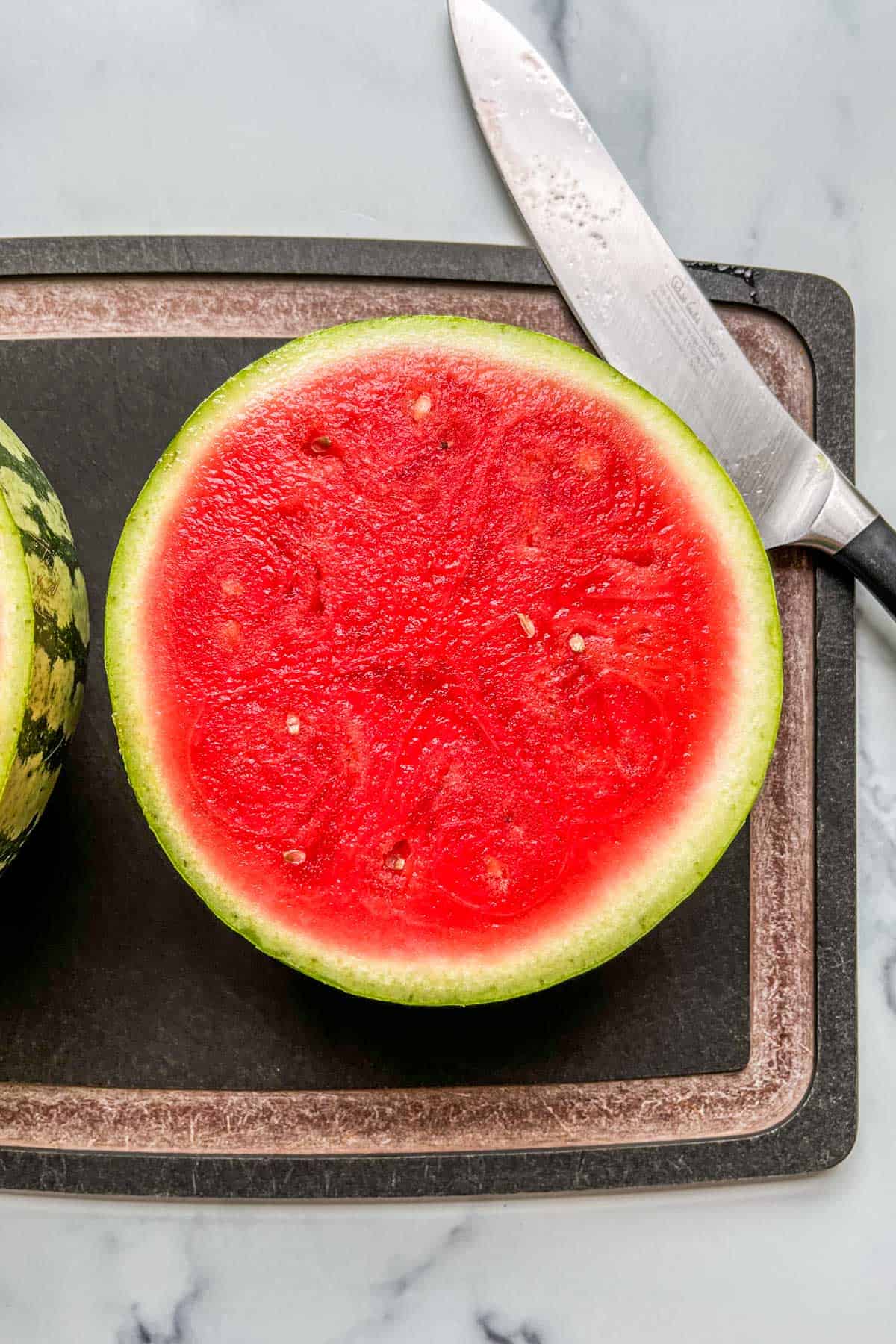
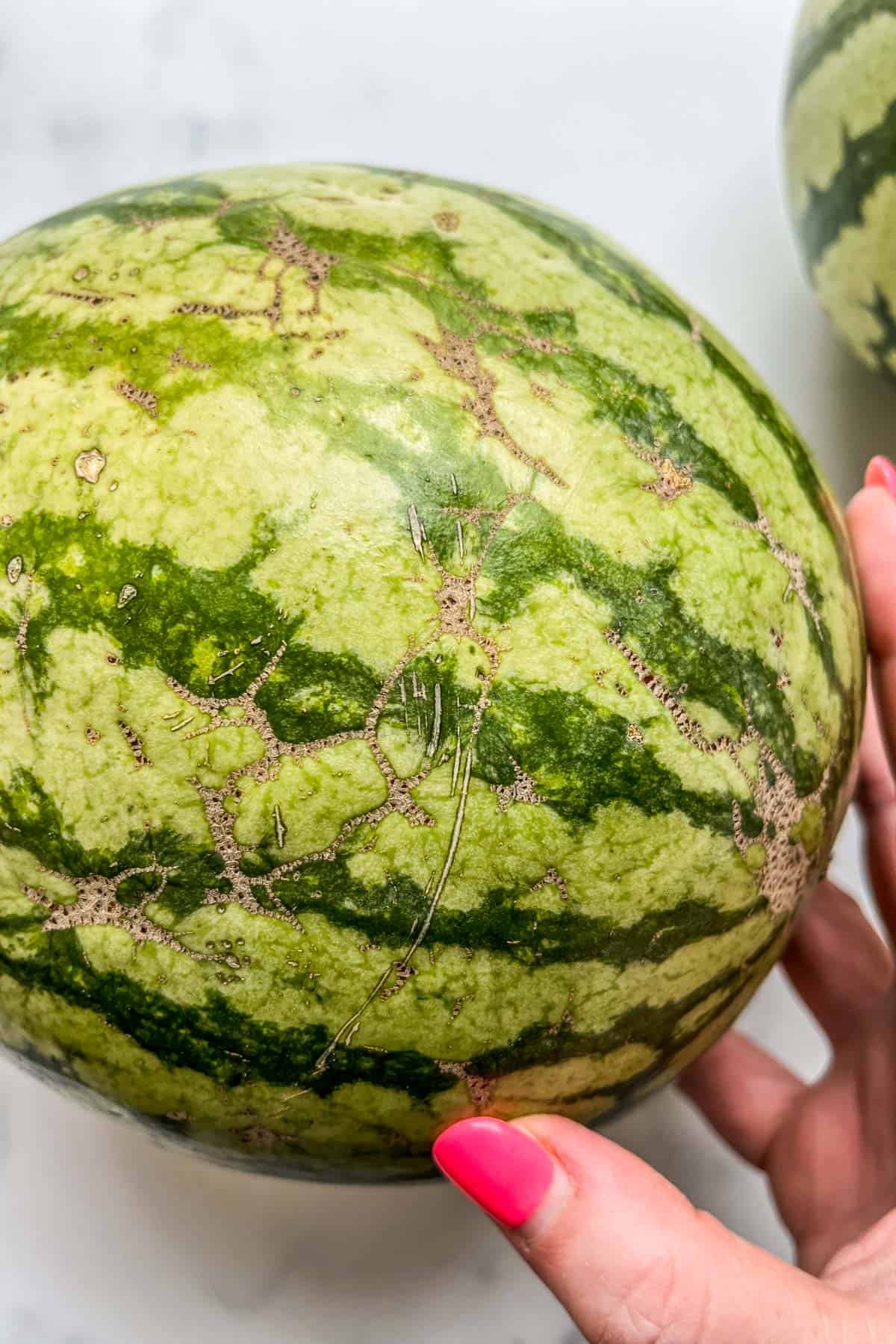
Watermelon FAQs
When are watermelons in season?
Peak watermelon season is in July and August, especially if you live in a cooler climate. If you are in a warmer region, your peak season might be from June through September.
Whatever climate you are in, watermelons will always be at their best in the summer months.
Should mini watermelons be soft?
No, mini watermelons should not be soft. A soft melon is an overripe melon (even in mini size)!
How big should a mini watermelon be?
Mini watermelons are anywhere from 4 to almost 9 pounds in size, but generally, melons that are 6 to 7 pounds are the best!
How to Store a Watermelon
A whole watermelon can be kept at room temperature for 7 to 10 days. If it starts to get too ripe, move it to the refrigerator.
Cut or sliced watermelon should be stored in the refrigerator, in an airtight container, for up to 4 or 5 days.
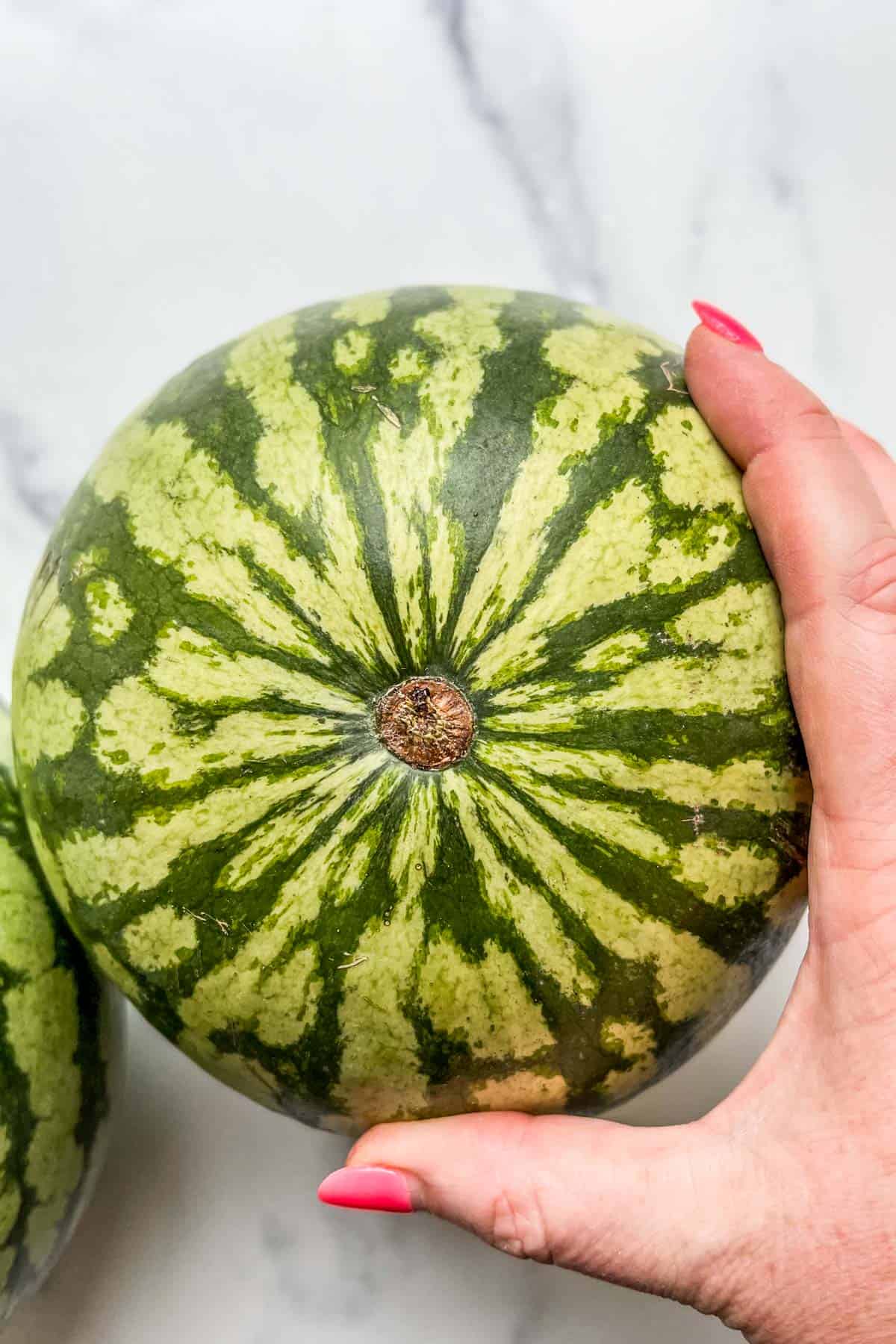

Watermelon Recipes
Try some of our favorite ways to use watermelon!
- Watermelon Pizza - a cute and fun snack recipe with Greek yogurt and berries
- Mexican Watermelon Salad - a delicious tangy salad with Tajin seasoning
- Watermelon Poke Bowl - a fantastic plant-based main course dish
Conclusion
I hope this guide has helped you choose the perfect watermelon with lots of sweetness. There is nothing better on a hot summer day that a delicious watermelon! Just remember to check the shape, weight, webbing, and color of your mini watermelon before buying it.






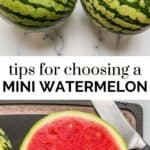
Leave a Reply